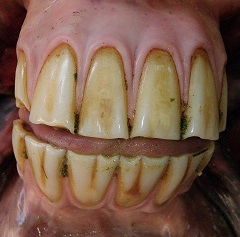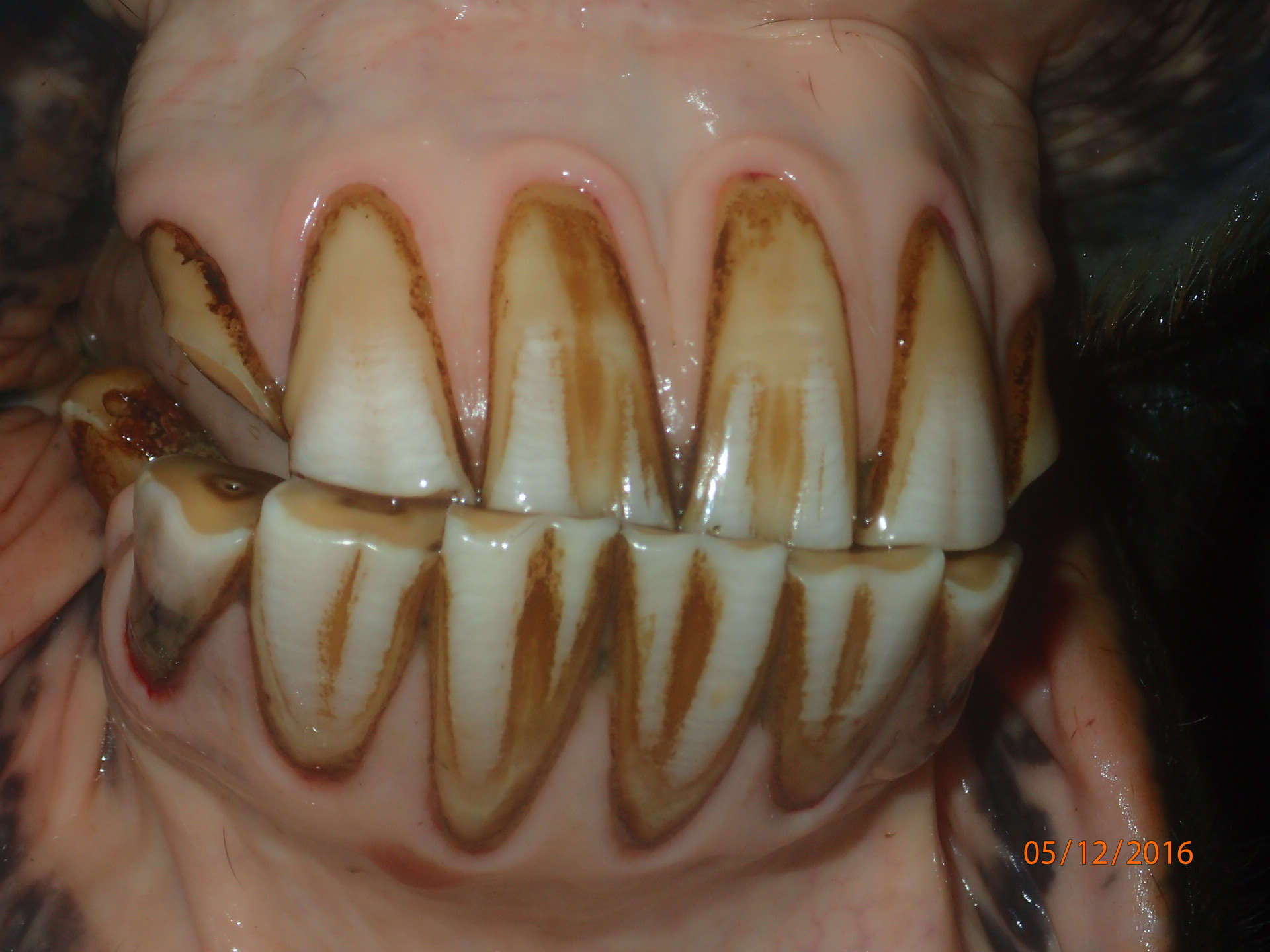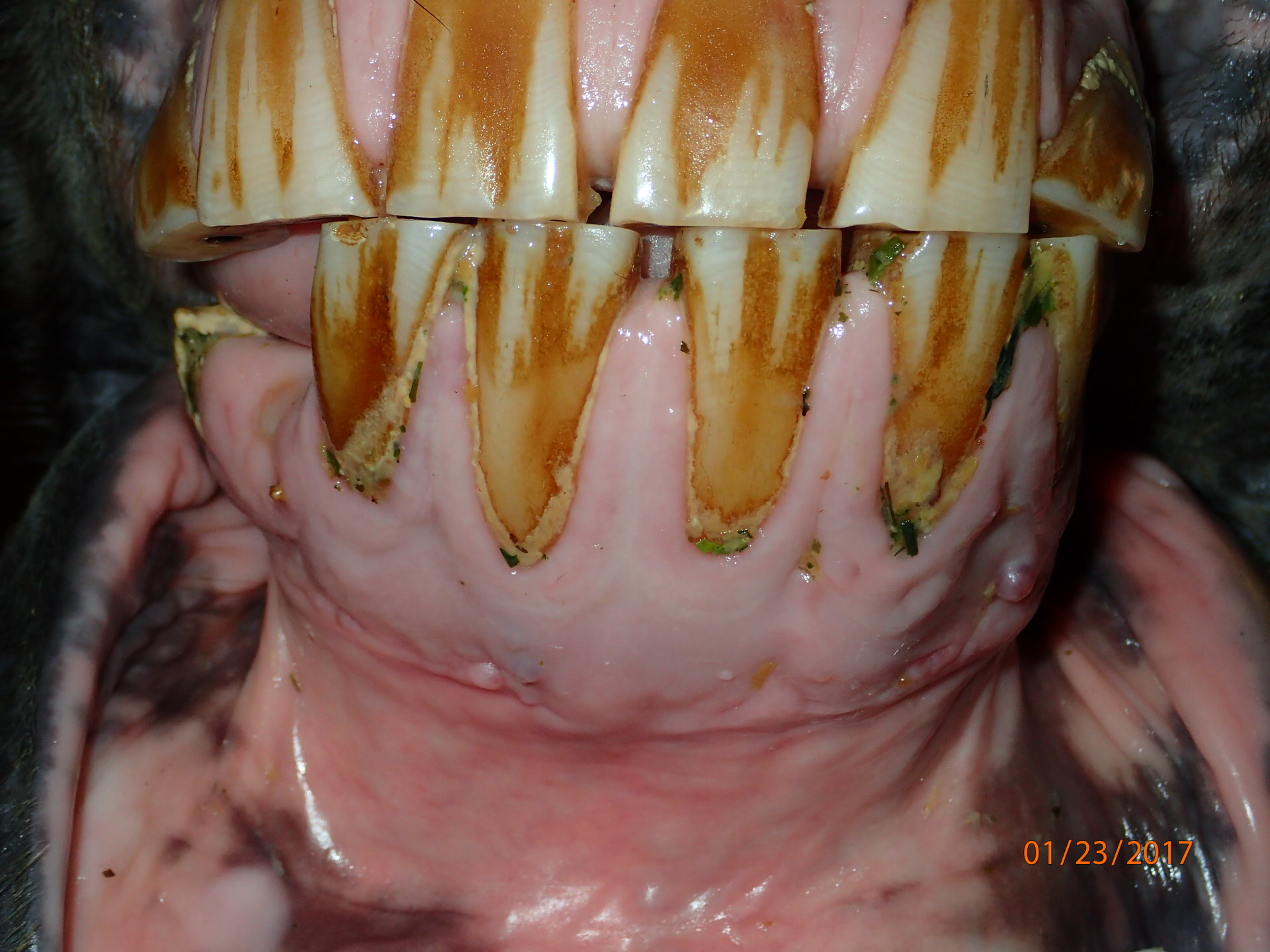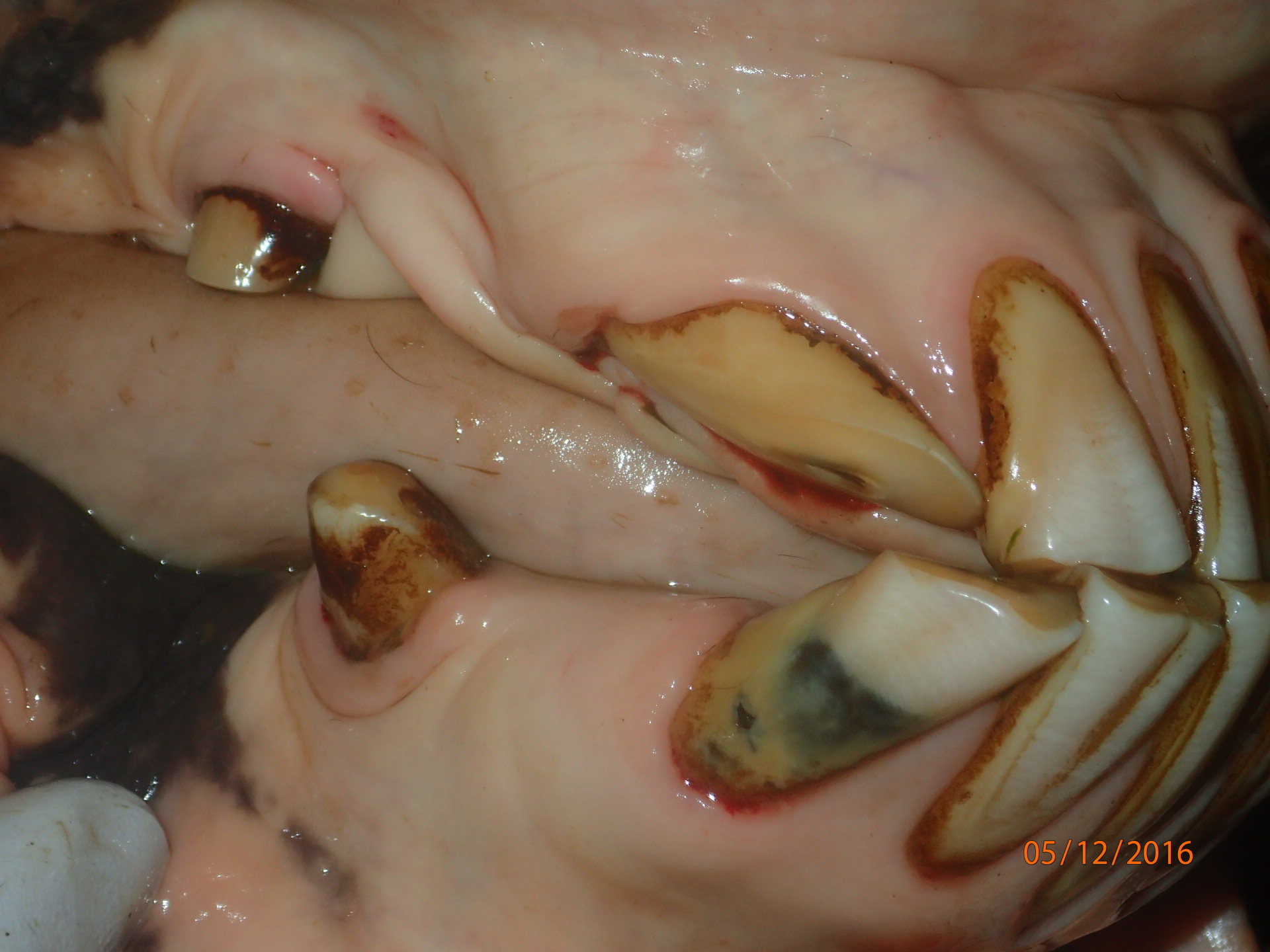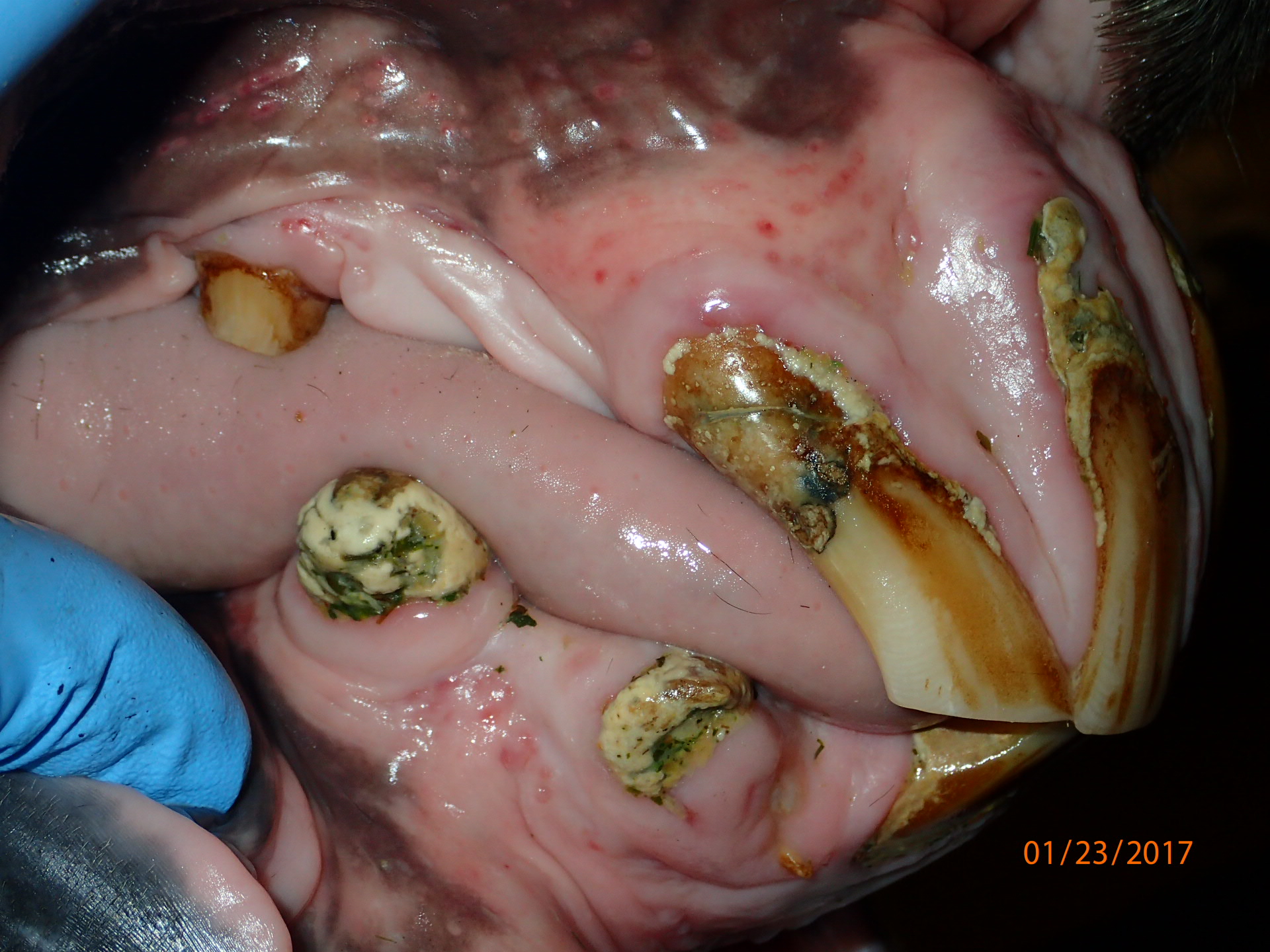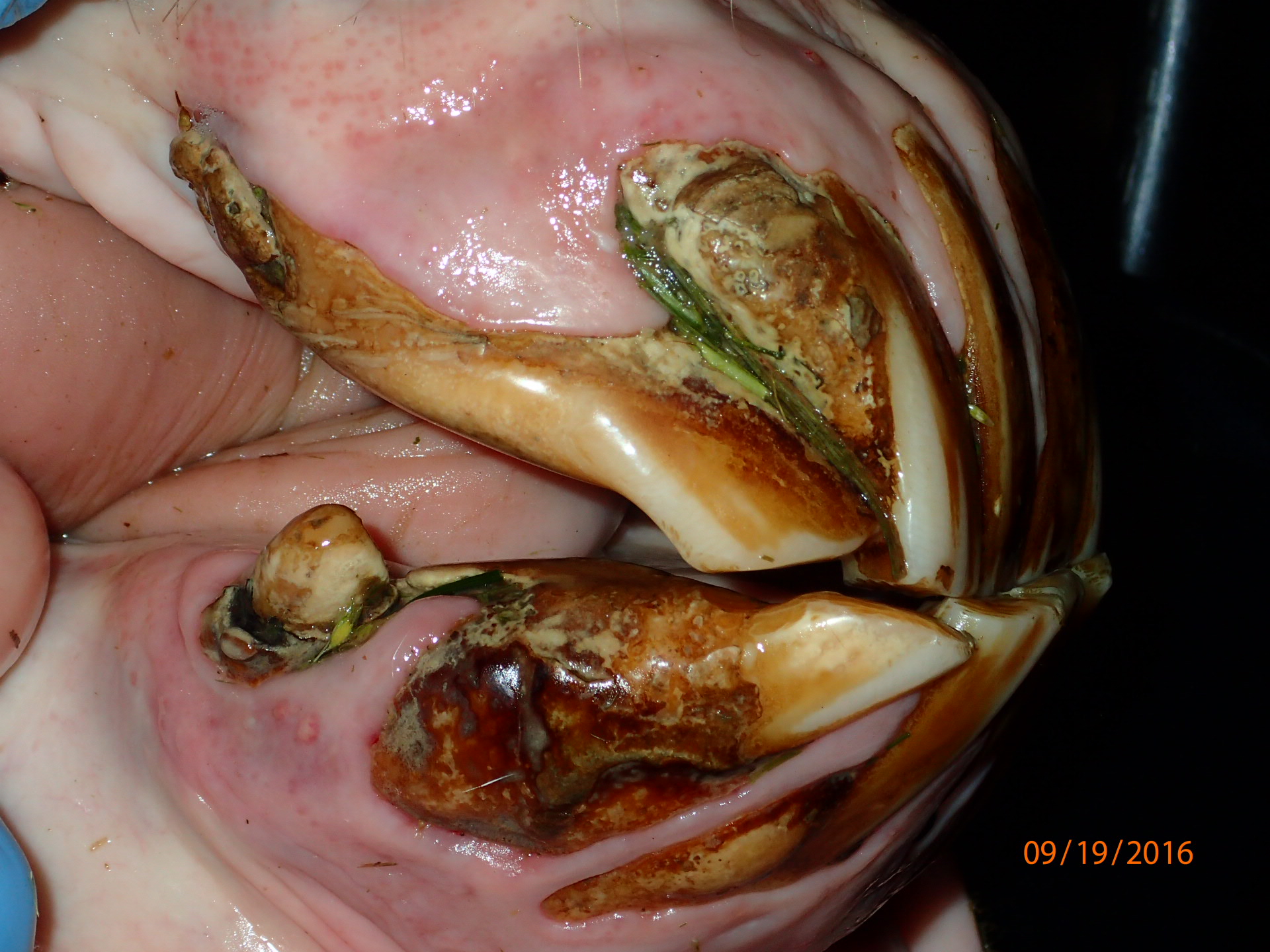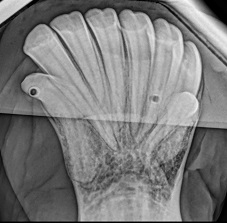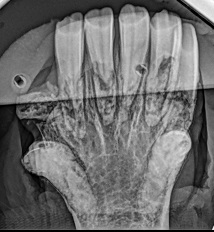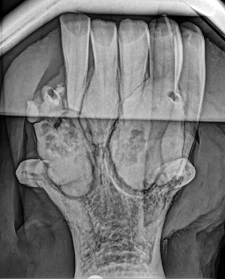EQUINE ODONTOCLASTIC TOOTH RESORPTION AND HYPERCEMENTOSIS
Normal Horse Moderate EOTRH Severe EOTRH Severe EOTRH (resorption) (hypercementosis)
EQUINE ODONTOCLASTIC TOOTH RESORPTION AND HYPERCEMENTOSIS
EOTRH is a syndrome in older horses resulting in resorptive lesions of incisors and canine teeth, and sometimes cheek teeth. As disease progresses, the roots of multiple teeth begin to resorb (dissolve), and the body tries to stabilize these teeth by laying down extra cementum. This results in hypercementosis, or bulbous swellings around the roots of affected teeth. These teeth become infected, abscess, may loosen or even fracture. In severe cases there may also be significant extension of disease to the bone around the affected teeth.
This is a slowly progressive disease, it is unknown at this point what the trigger is that starts the process. EOTRH is mostly identified in older horses (15+), but that is really because that is when the signs are more obvious. The veterinarians focused on dentistry that are looking closely for more subtle changes are diagnosing early cases in younger horses. Radiographs are essential to making a diagnosis, because most of this process occurs below the gumline and cannot be seen without proper radiographic evaluation. Often there are more severe changes present radiographically than what are expected by looking at the teeth and gums, so there often are subtle changes that tip us off to take a radiograph to see if there is something more going on.
This can become a very painful condition for affected horses and can result in weight loss, attitude changes, and discomfort in the bridle. We know that both periodontal disease and dental abscesses are painful, and this syndrome causes a significant degree of both, with usually multiple teeth affected. Horses are quite stoic and adapt to this chronic pain, it is typically not until the pain is gone (when the affected teeth are extracted) that we realize how much it was affecting them.
Regarding extractions, horses tolerate these very well. The horses are standing, heavily sedated with plenty of local anesthesia so they cannot feel anything happening in their mouth. Following these extractions, they are typically eating before they go home the same day. There is no diet change after extractions, as they use their cheek teeth and not incisors to chew their hay or feed. They are still very much able to graze, pick up hay & grain using their lips and tongue. These horses are typically completely healed between 4-6 weeks, but usually feeling much better within days after extraction.
Please do not hesitate to contact us with additional questions, and we are also happy to put clients in touch with others that have been through this with their horses.
Additional information:
Cornell University College of Veterinary Medicine

